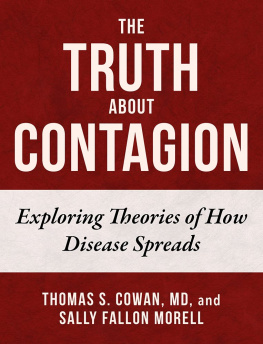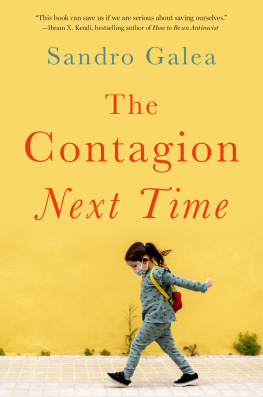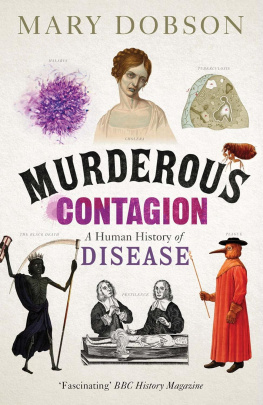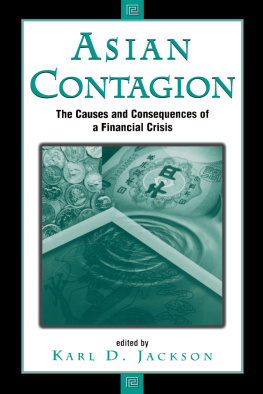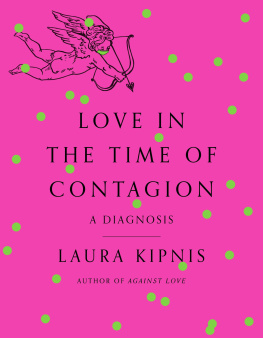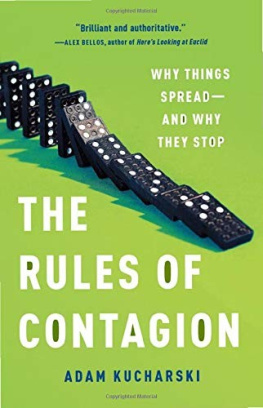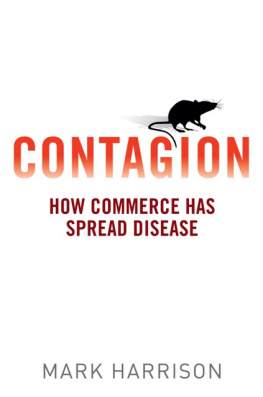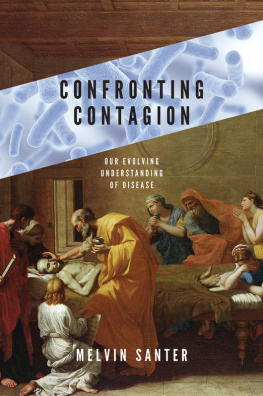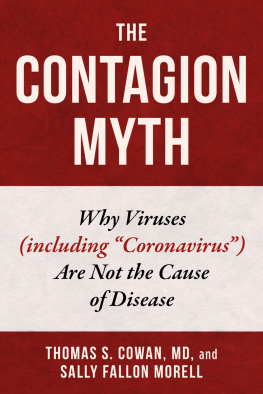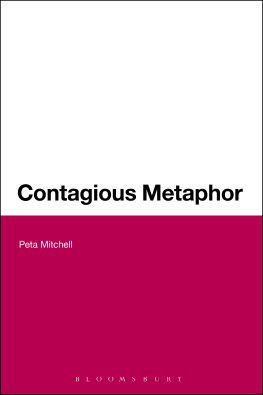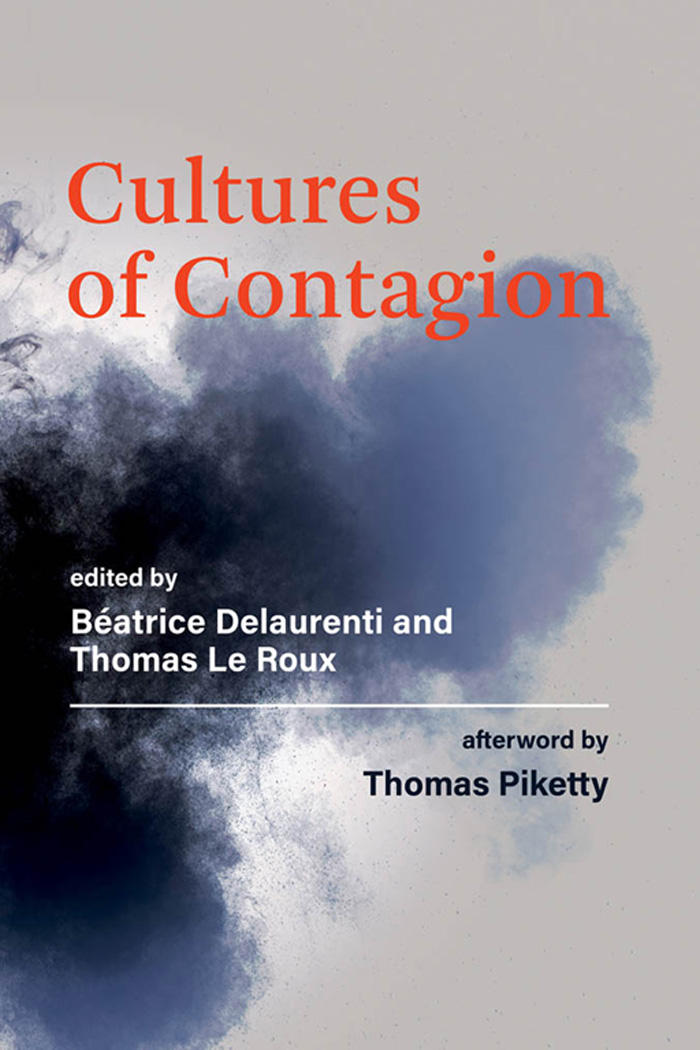
Cultures of Contagion
Cultures of Contagion
edited by Batrice Delaurenti and Thomas Le Roux
The MIT Press
Cambridge, Massachusetts
London, England
2021 Batrice Delaurenti and Thomas Le Roux
All rights reserved. No part of this book may be reproduced in any form by any electronic or mechanical means (including photocopying, recording, or information storage and retrieval) without permission in writing from the publisher.
This book was set in Adobe Garamond Pro by New Best-set Typesetters Ltd.
Library of Congress Cataloging-in-Publication Data
Names: Delaurenti, Batrice , 1972 author. | Le Roux, Thomas, author.
Title: Cultures of contagion / edited by Batrice Delaurenti, Thomas Le Roux ; afterword by Thomas Piketty.
Description: Cambridge, Massachusetts : The MIT Press, 2021. | Includes bibliographical references.
Identifiers: LCCN 2020040796 | ISBN 9780262045919 (hardcover)
Subjects: LCSH: Communicable diseases.
Classification: LCC RA643 .D44 2021 | DDC 616.9dc23
LC record available at https://lccn.loc.gov/2020040796
10 9 8 7 6 5 4 3 2 1
d_r0
Contents
Batrice Delaurenti and Thomas Le Roux
Florence Hachez-Leroy
Jean-Claude Schmitt
Olof Bortz
Sbastien Malaprade
Jean-Pierre Cavaill
Perrine Mane
Sebastian V. Grevsmhl
Mickal Wilmart
Catarina Madeira-Santos
Sofia Navarro Hernandez
Jean Baumgarten
Yves Cohen
Elizabeth Claire
Alessandro Stanziani
Pierre-Olivier Dittmar
Marie-lizabeth Ducreux
lise Haddad
Hugo Perina
Catherine Fhima
Benot Grvin
Judith Lyon-Caen
Maria Cecilia DErcole
Marie Anne Polo de Beaulieu
Frdric Vagneron and Patrice Bourdelais
Paul-Andr Rosental
Ron Naiweld
Christiane Klapisch-Zuber
Sebastian V. Grevsmhl
Diane Carron
Thomas Le Roux
Natalia Muchnik
Niccol Mignemi
Sergi Sancho Fibla
Silvia Sebastiani
Sebastian Veg
Nicolas Sarzeaud
Davide Mano
Vincent Debiais
Sergi Sancho Fibla
Jean-Baptiste Fressoz
Marcela Iacub
Antoine Roullet
Stphane Baciocchi
Raphal Morera
Thibaut Julian and Suzanne Rochefort
Pablo A. Blitstein
Nancy L. Green
Ariane Mak
Dinah Ribard
Batrice Delaurenti
Thomas Piketty
INTRODUCTION
Contagion: Its History and Some Historiographical Examples from Antiquity to Today
Batrice Delaurenti and Thomas Le Roux
Contagion is in the news. This introduction was being written in March and April 2020, a time when France, following China, along with Frances neighbors in Italy, Spain, Great Britain, Germany, with the United States, and almost half the human race, was living through a period of population lockdown, the aim being to fight the advance of COVID-19, the disease caused by SARS-CoV-2. The outbreak and rapid propagation of the epidemic has been a shock, having repercussions for the health, society, politics, economics, environment, intellectual life, and culture of every country as well as for the everyday lives of all. Historians have long understood that epidemics played a significant role in history and viruses have been important agents in human evolution, not least as circulation and exchange increased. This book, already in preparation more than a year ago, nears its publication amid worldwide contagion and general lockdown. For us, to write this introduction at such a time has been a singular experience, which has led us to nuance our perspectives on the subject and its importance.
Now more than ever, contagion has revealed itself to be a powerful interpretative model that is capable of illuminating not only the medical characteristics of a diseases propagation but also a very large number of social aspects and therefore the history of society. The social sciences appear to have established that periods of epidemic have generally been accompanied by a variety of social phenomena, behaviors, and reactions, including changes in theories and ideas. The present-day worlds interest in contagion cannot therefore be put down simply to todays glaring headlines. While the term is now applied most commonly to transmissible diseases, it has also been used to describe situations that go well beyond medicine and entail social relationships at all levels relating to both individual and collective experiences. From the inescapable return of head lice to the scalps of schoolchildren to the generalized pollution of natural environments, from fashionable movements to the conspiracy theories that propagate like spores on social media, from the hacker attacks to the fraudulent use of influence, from the messages that accumulate around places of terrorist attacks to the MeToo movement, contagion is a multifaceted process that runs across all social fields.
Going beyond the immediate environment at the time of writing, the present collection aims to adduce a historical perspective to the notion of contagion. It is not a new field, as it has stimulated research in the human sciences for some decades. In 2011, a special issue of the periodical Tracs advocated, with respect to contagion, its detachment from nature, through historical analysis and working across disciplines, of what stands out as a key to understanding numerous present-day phenomena. Within that perspective, the current volume offers a wide purview of social, cultural, political, and anthropological situations where the concept of contagion has relevance. It points to a number of markers in the history of contagion that reveal the diversity and historicity of the phenomena connoted by the word contagion and demonstrates the multiplicity of uses to which it can be put.
A Polysemic Notion
According to the American Heritage Dictionary of the English Language, the primary received sense of the term contagion is literal and belongs to medicine. It connotes a disease transmission by direct or indirect contact and is complemented by a secondary sense pertaining to the psychological sciences: the spread of a behavior pattern, attitude, or emotion from person to person or group to group through conscious or unconscious imitation. Two additional meaning are figurative or analogical, a harmful, corrupting influence and the tendency to spread, as of a doctrine, influence, or emotional state. The idea of transmission is common to all of the situations envisaged here, be they in a literal sense or used metaphorically to describe a process amenable to social scientific analysis.
Given the porosity of these definitions, there is a temptationas has often been the caseto apply the modern medical description to other areas. However, such procedures raise methodological or analytical difficulties. While the medical use of the term prevails today and contagion is often described according to models referencing biology, mathematics, or statistics, this division is not obvious from a historical point of view. That it should appear natural is more apparent than real. The word has enjoyed a great variety of uses over the long term, with an infinity of nuances and an ever-changing balance between medical and other connotations.
In its current medical sense, contagion refers to the transmission from one infected to a noninfected person of a pathogen that attacks the physical organism. The transmission may be direct where there is contact between two subjects or indirect where there is an intermediate animal or object that acts as a vector of contagion. Etymologically, the fundamental idea relates to the phenomenon of touching (from Latin,
Next page

